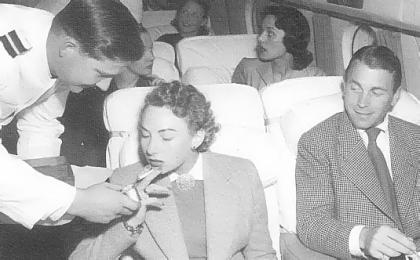*Editor’s Note: We are not representing that electronic cigarettes are “safer” than standard cigarettes. We are simply giving the history of the electronic cigarette and the results of studies by different government and health organizations*
If you want to find an example to represent everything that modern technology stands for, look no further than the electronic cigarette. They offer smokers an alternative that is more convenient and saves them a great deal of money over traditional cigarettes while still providing the sensation that smokers prefer.
So How Was the Electronic Cigarette Invented?
Well, you might not believe it but the idea of electronic cigarettes has been around since the 1960’s. A man named Herbert A. Gilbert originally filed the patent for electronic cigarettes in 1963. Having the foresight that many people didn’t have at that time, he recognized the dangers of smoking cigarettes and envisioned a device that would give the same sensation of smoking without the health detriments.

This idea did not come to fruition at the time for a number of reasons. The main reason being that, as discussed above, nobody at the time saw the dangers of smoking. Cigarettes were firmly engrained in the day-to-day life of Americans. Cigarettes were so prolific that it was commonplace for people to smoke pretty much everywhere, including offices, airplanes, and classrooms. There was no data to show the harmful effects of cigarettes so nobody considered them to be dangerous, or healthy for that matter. Therefore, there was simply no market for a healthier alternative. On top of that, the technology necessary to make it a reality was available at the time.
Electronic Cigarettes in the 2000’s
It was only a matter of time before things started falling into place for the electronic cigarette.
In the early 2000’s, A man named Han Lik’s father died of lung cancer. As a smoker and a pharmacist, this inspired him to start developing the electronic cigarette. Trying to find triumph in tragedy, he started to develop a way for smokers to inhale the nicotine that they were addicted to without the lung damage and chemical ingestion typically associated with cigarettes. Thanks to the support of the company he worked for, who took on the name Ruyan, he was able to make this a reality and introduced the first working electronic cigarette to the Chinese market.
Electronic cigarettes were an instant hit in China and quickly started to spread to international markets including many nations in Europe, where they gained even more popularity. This marked a monumental moment in the evolution of the electronic cigarette.
Electronic Cigarettes in the American Market

Electronic cigarettes first hit the American market in 2007, and instantly gained traction. As a result, the World Health Organization publically referenced them, becoming the first Government or Health organization to do so. The WHO did not issue any statement on whether Electronic Cigarettes were safe or harmful, electing only to ban them as a product that assisted in the cessation of smoking. People saw this not as a negative, instead focusing on the fact that they did not find any negative effects.
This started a chain reaction of studies by various institutions into the dangers and benefits of Electronic Cigarettes. A 2008 study by Health New Zealand (in the interest of full disclosure was funded by Ruyan) was published and found that, due to the use e-juice instead of tobacco, no harmful chemicals were found at toxic levels. This same study found electronic cigarettes to be between 100 and 1000 times less harmful to users as traditional cigarettes. (http://www.healthnz.co.nz/ecigartette.htm)
By the time 2009 rolled around, various governments and government agencies were targeting Electronic Cigarettes. Australia and Canada were among the first to ban them. The FDA or Federal Drug Administration stopped shipments of them from entering the country, stating that these products required formal registration. Companies that produced electronic cigarette were quick to respond, due to their belief in the products they were selling. Retailers and manufacturers banded together to bring lawsuits against the FDA in order to ensure that they would receive fair and balanced legislation regarding the sale and purchase of electronic cigarettes.
Since then, and continuing to this day, there has been an abundance of back-and-forth regarding the safety of electronic cigarettes. The FDA has repeatedly claimed that electronic cigarettes are dangerous and should be regulated as such. Similarly, there have been numerous independent studies that have either completely refuted these claims or refuted major portions of these claims.
This is a battle that will likely not end soon. Any time there is a major interest in a product like this, there will always be backlash. It’s only a matter of time before we see how this all plays out, and until then, we will have to use our own minds and research to find the information on whether we think electronic cigarettes are right for us.













